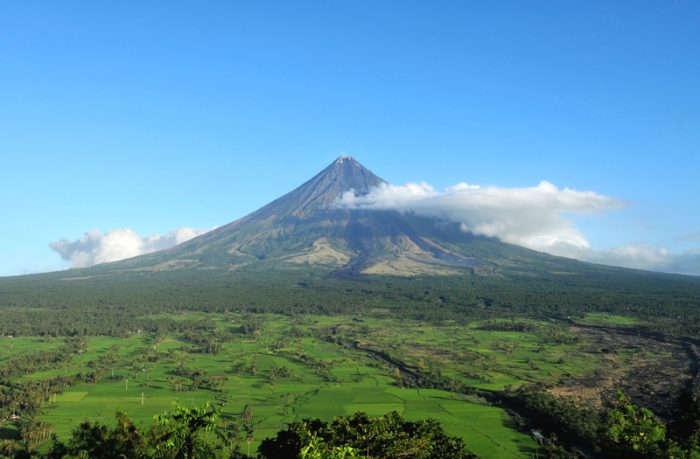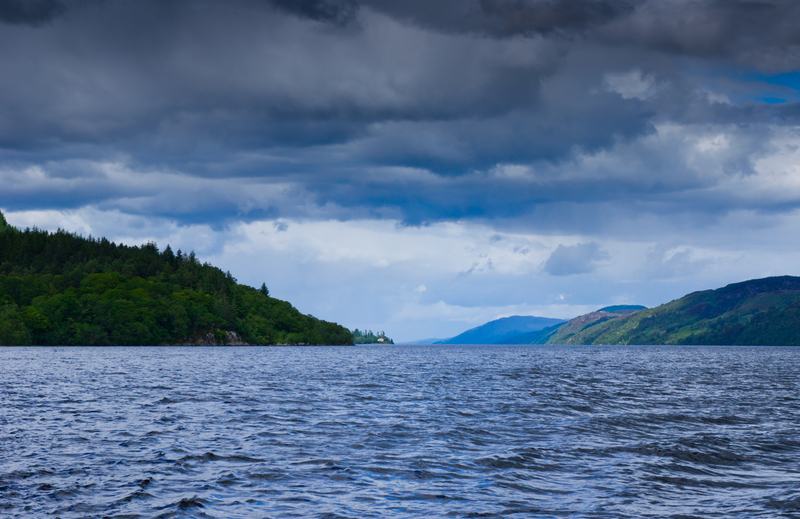Since January 13, a volcano in the Philippines called Mount Mayon has been spewing ash and steam into the air. Lava has also been seen flowing down from its peak. Though this volcano is well-known for its activity, (it has erupted over 50 times in the last 500 years and last erupted in 2014), Mount Mayon isn't in the middle of a full-blown eruption...yet.
But all last week, experts had been warning that it was building up to something especially powerful. This seemed to be confirmed on Monday.
Mount Mayon sends ash into the air on Monday. (Getty Embed)
A powerful eight-minute long explosion sent a new ash column five kilometres (2.7 miles) into the air.
Evacuations already underway
New explosions from the volcano raised alert levels. (Getty Embed)
Phivolcs (Philippine Institute of Volcanology and Seismology) have raised the Alert Level (used to measure how dangerous the situation is on a scale of 1 to 5) from 3 to 4. This means a full eruption is likely within hours or days.
The organization created a danger zone covering eight kilometres (5 miles) of the volcano crater. People are advised to flee this area immediately, and many already have. At least 55,000 residents have been evacuated and are taking shelter outside the danger zone. Schools in the area have been closed, as well.
People evacuated from the area around Mount Mayon. (Getty Embed)
According to Phivolcs, the biggest dangers currently include rockfalls and landslides (due to a combination of ash/rock buildup and rainfall), and, of course, sudden explosions from further volcanic activity. Best case scenario, Mount Mayon doesn't get much past this level of eruption. But since experts warn that the volcano might be past the point of no return, what can we expect?
Business as usual, or new threat?
Mount Mayon is found near the central Philippines. (Getty Embed)
The Philippines is a nation made up of over 7,000 islands found in the Pacific Ring of Fire. In short, the Ring of Fire extends around the edges of the Pacific Ocean that is prone to volcanoes and earthquakes. The Philippines alone has 23 active volcanoes. So residents are no stranger to this sort of situation.
In addition, Mount Mayon is found in Albay Province, around 340 kilometres (210 miles) from the world's most densely populated city, Manila. This is enough distance to keep that mega-city's 35 million residents safe, which is a relief.
Mount Mayon as seen from Legazpi City. (Getty Embed)
However, Legazpi City, home to 200,000 people, is only 16 km (10 miles) away. It is safe right now, but is definitely at risk if Mount Mayon's erupting hits a higher level. Potentially, a truly massive eruption could have national, and even global implications. Ash sent high enough into the atmosphere near the equator can travel far around the globe, cooling overall temperatures.
In the end, it comes down to several factors that are still too hard to perfectly predict—wind patterns, the strength of the eruption, and type of eruption. But fortunately, organizations like Phivolcs are advanced enough that a large eruption won't come as a shock. Their warnings save lives and make rebuilding a far easier task.
 Mount Mayon in more peaceful times. Its beautiful peak normally makes it a huge tourist attraction, but everyone is staying away now. (Edwin Verin | Dreamstime.com)
Mount Mayon in more peaceful times. Its beautiful peak normally makes it a huge tourist attraction, but everyone is staying away now. (Edwin Verin | Dreamstime.com)










oh my goshhhh 😀 😉 😯 😎
oh my goshhhh 😀 😉 😎 😎 😎
Did Mount Mayon erupt at 2018 or what? ❓
That photo looks like a demons appearance 💡 ❗